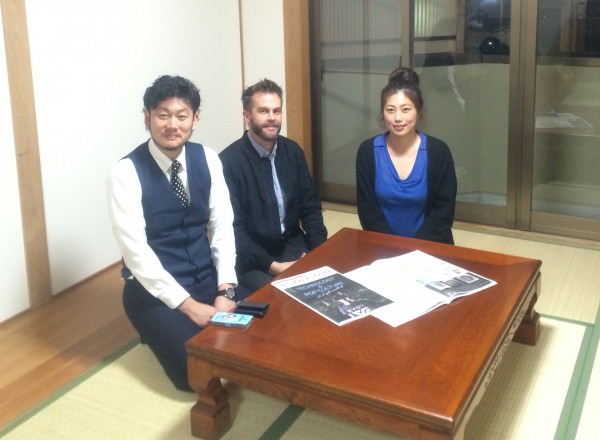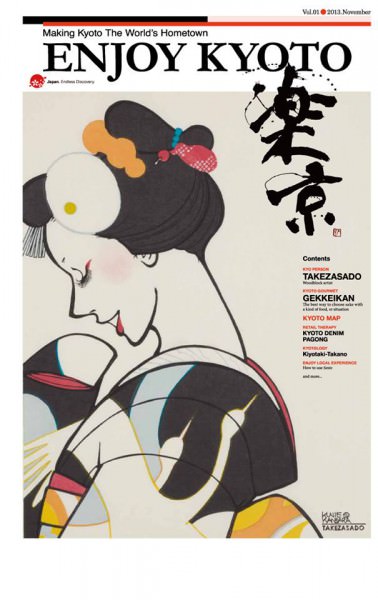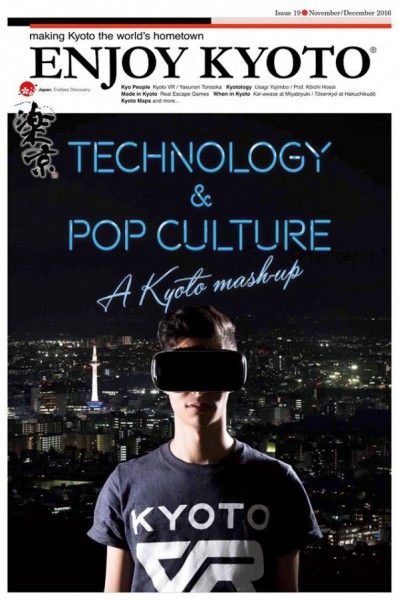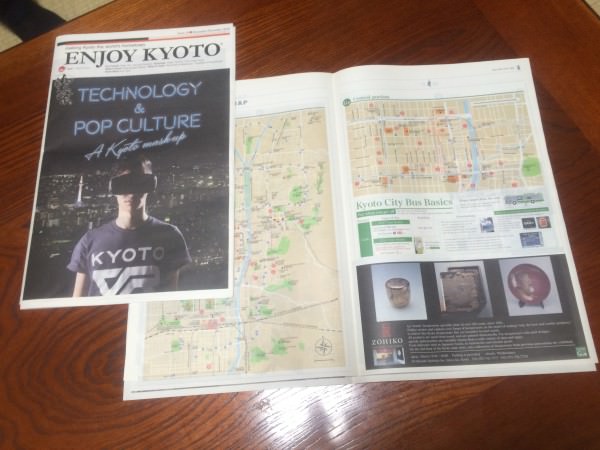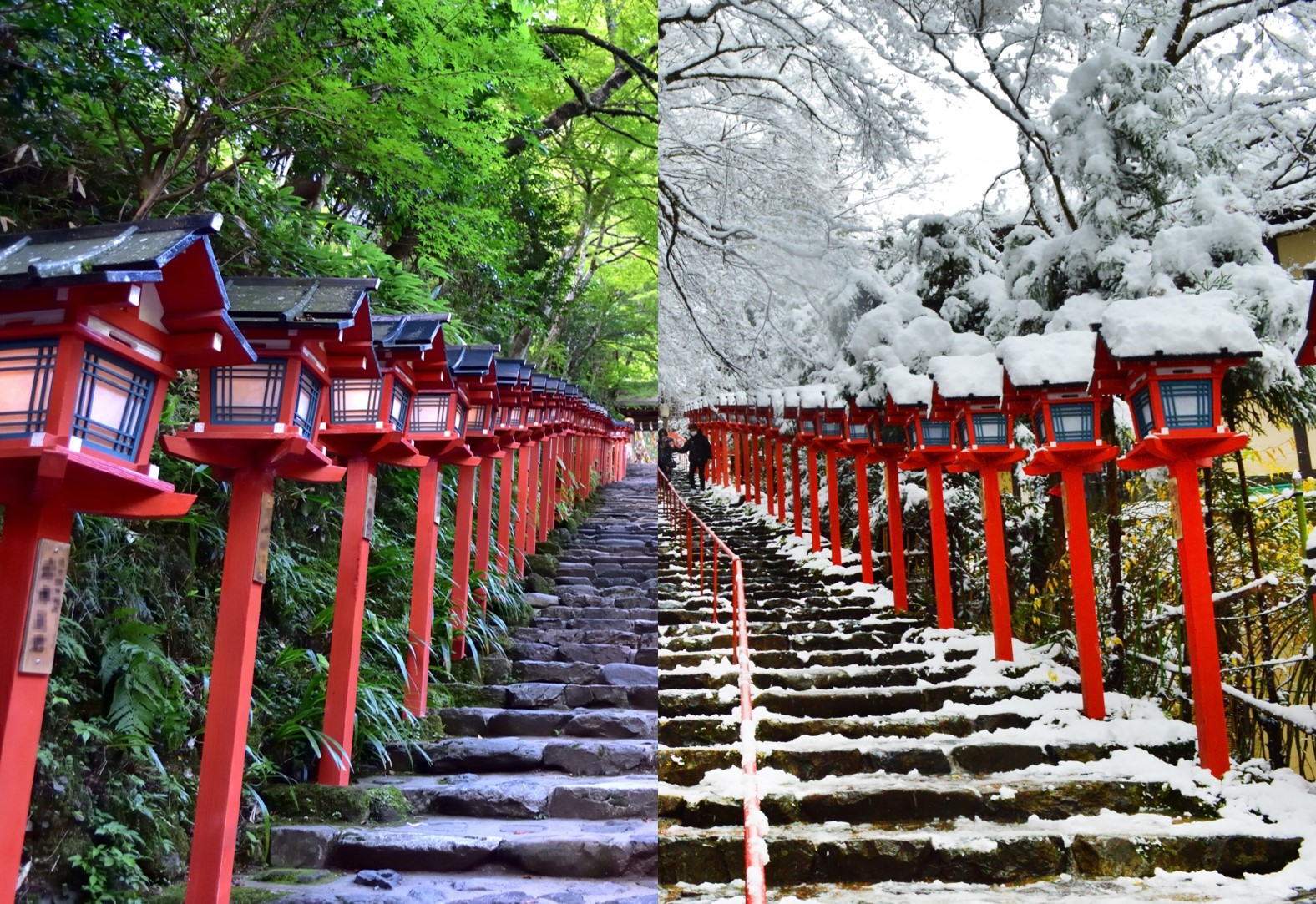“Enjoy Kyoto” นิตยสารฟรีที่ทำให้คุณได้ค้นหา “เกียวโต” ที่แท้จริง
2017.03.03
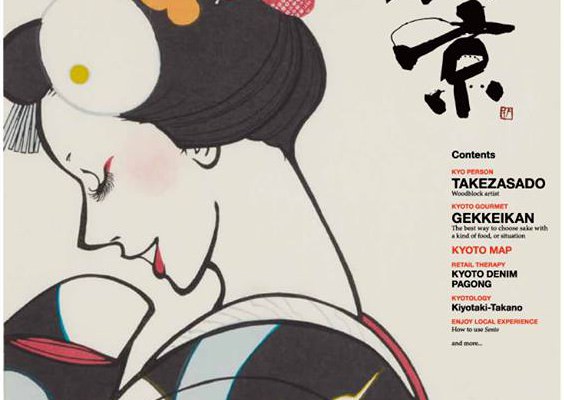
“Enjoy Kyoto” is a free newspaper written in English for visitors to Kyoto, and is available in hotels, guest houses, and traditional ryokan inns, as well as tourist information centers, temples, and even within the cars of the Hankyu train line. The paper is even available as far away as Osaka and Tokyo!
The staff at “Enjoy Kyoto” are extremely knowledgeable about all things Kyoto, and Study Kyoto Magazine recently had an opportunity to ask them about the City of the Kyoto as they see it.
They also shared with us their production and interview process, and some thoughts about the role of the paper and the booming travel industry in Kyoto at large.
About "Enjoy Kyoto"
From left: CEO Shinya Tokumo, Editor & Translator Stephen Richmond, Writer & Editor Satoko Takei
Before beginning “Enjoy Kyoto,” Mr. Tokumo worked primarily in international tourism. We wanted to know the story behind “Enjoy Kyoto,” and why Mr. Tokumo created this all-English paper for foreigners in Kyoto.
Q: Please tell us a little about the founding of “Enjoy Kyoto.”
Tokumo: “I started ‘Enjoy Kyoto’ in 2013, and until that time, I’d spent most of my career promoting tourism to Japan. Back in 2013, people hadn’t yet started talking about the Tokyo Olympics, but there were a lot of foreign tourists in Tokyo already, and I really felt that there was a need to supply better information for them. Not just information, really, but information that was “alive”: not just digging up old articles, but producing new, up-to-date, and more substantial content. You can already find everything you could possibly want to know about cherry blossoms or the maple-leaf viewing season online, but I felt strongly that I wanted to do something different, so I got my team together here.”
“Enjoy Kyoto” has published issues with specials on everything from the traditional artisan families of Kyoto to the city’s developments in virtual reality (VR) technology. Putting together such unique themes is part of Ms. Takei’s job. Ms. Takei came to “Enjoy Kyoto” after working at “Leaf,” a major local interest magazine in Kyoto & Shiga Prefectures. In addition to her current position at “Enjoy Kyoto,” she works as a freelance writer.
Q: What is the typical process involved in seeking out and conducting interviews?
Takei: “We typically start by getting together our writing and editing team to decide on the theme of the next issue. We write each edition of ‘Enjoy Kyoto’ around a central topic, and try to look at it in-depth. With the VR theme we had in the last issue, everything started with finding one ‘key person’ and branching out from there. Sometimes we’re able to locate our key person just by putting out our feelers for information on a topic. When one person’s name begins to come up again and again, you know you’ve found someone central to the topic. That search process in itself is interesting.
Enjoy Kyoto Volume 1: Special on woodblock artist Takezasado
Enjoy Kyoto Volume 19: Special on VR (Virtual reality technology)
“Once we’ve located our key person, we start by getting in touch with them and going in for a chat. We can ask them about their particular field of knowledge, the movements in that industry, and from there we develop ideas about what topics might make for good articles, and contact other individuals for each one. Making these connections is important, because it’s much more effective than calling people out of the blue: Kyoto may be a major city, but it still has a small town heart.
On the day of the interview, we go out with a writer, a cameraman, and a graphic designer to conduct the interview and the photoshoot. Sometimes Mr. Tokumo or Rich will come along with us, too. That becomes the basis of our piece.
Once we’ve done our interviews and done all of our research, one of our writers will write the article in Japanese. We’ll have them checked by our interviewees to make sure everything’s in order, and if everything’s ok we’ll move on to translation. Rich translates the article—not just into English; he edits the language and phrasing for a non-Japanese audience.”
It may take time, but “Enjoy Kyoto”s careful process also ensures the staff gain the trust of their interviewees. Cherishing each meeting seems somehow very Kyoto-like indeed.
What attracts you to Kyoto?
As a magazine working to showcase Kyoto’s appeal as a study abroad destination, we had to ask the staff at “Enjoy Kyoto” their thoughts on the city.
What attracts you to Kyoto?
We addressed this question first to Mr. Richmond, who moved to Japan from Australia, and to Kyoto after living in other Japanese cities. He currently teaches classes in intercultural communication.
Q: What would you say sets Kyoto apart from other cities?
Richmond: “I think what makes Kyoto interesting and unique is that while it’s easy for non-Japanese people to visit and travel around, it still retains an element of mystery. There are lots of closed doors around the city. Opening them to see what lies behind is one of the delights of being here. Even after having lived in Kyoto for so many years, there are still things to discover, like the road just in front of the office here: I finally went to take a look, and found a traditional craft shop down there. There’s always more to explore.
There’s a traditional dollmaker nearby, as well, with the name Ando. They have a history of nearly one hundred years, and you’d never know they were there unless you passed down this little street. But they put out advertisements in English, too. They want more people to know about Japanese dolls. If you see their ads, you’ll see how much effort they’ve put into them: the detailed explanations of little names for all the kinds of dolls that most Japanese people don’t even know. But there’s all that depth and history, right there.”
Takei: “A big factor is of course Kyoto’s rich cultural heritage, and that many people still make their living with traditional cultural arts. They’re not just working to live; their life’s work is very much keeping that culture alive. I think that’s an incredible aspect of Kyoto: the ability to observe the evolution and refinement of these cultural industries right before your eyes.”
Tokumo: “Kyoto is like a theme park: it has everything. I started to feel that way after I started working here. I was born in Kyoto, but in the countryside rather than the city center, so I wasn’t making many visits to Kiyomizu-dera Temple. (laughs) You sometimes hear that Kyoto people are a bit cagey or have a bit of a wall up to outsiders, but once you cross over that threshold, you’re very much welcomed with open arms. Because of that, I do think there’s a feeling that this kind of newspaper, this kind of work, is really only possible in Kyoto. Even if I was told to do it elsewhere, I’m not sure it would work. We’re really blessed in that here. There was a bit of a barrier to get over in the case of Ando, the dollmaker that Rich mentioned, but you know once you visit the shop, you’ll find that they’re really wonderful people. The important thing is to take that first step.”
This got us curious about how “Enjoy Kyoto” goes about putting together an issue, so we asked the team about their process, and some of the challenges they face when writing an article.






